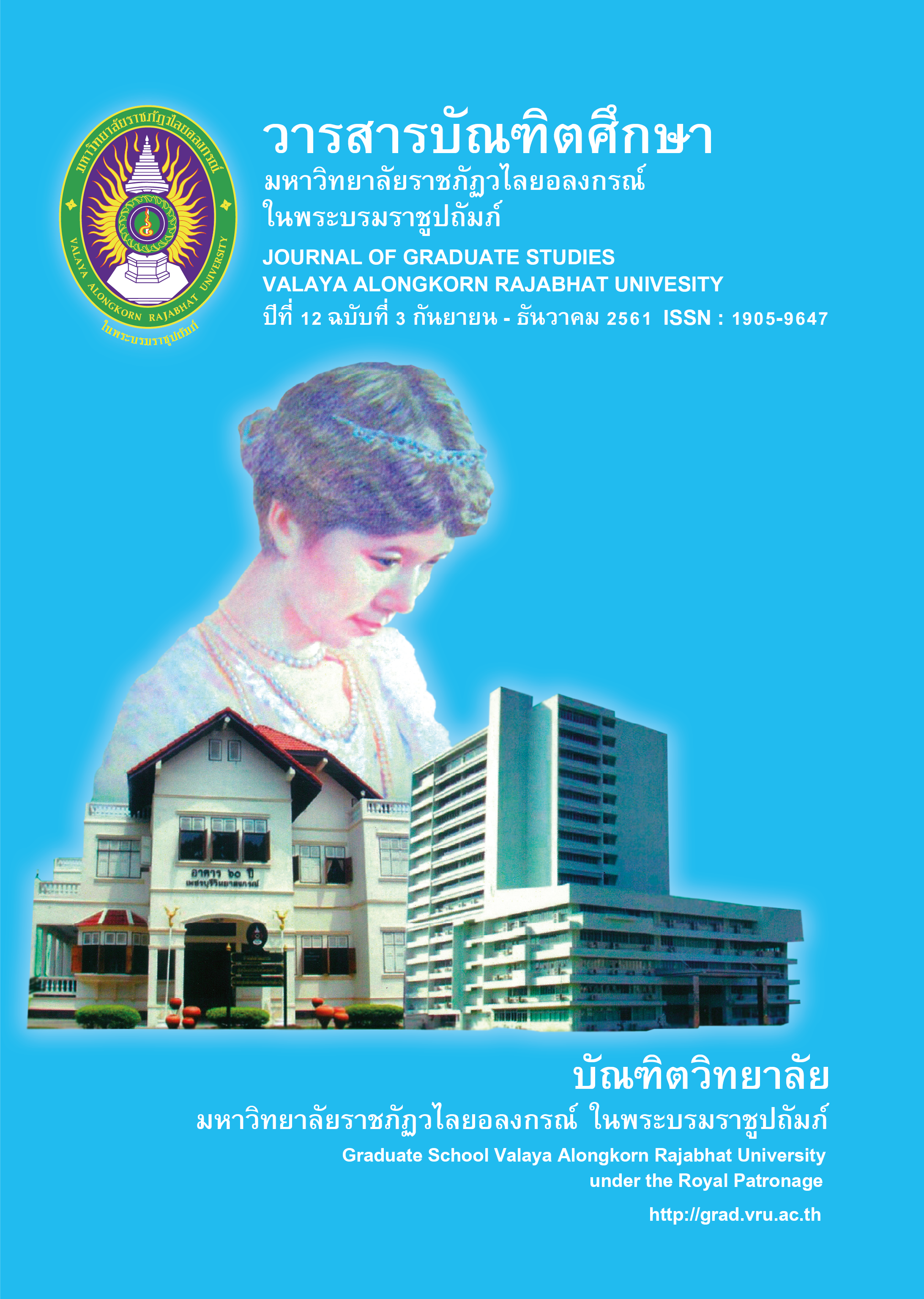THAI STATE: INTRODUCTION TO THE ORIGIN AND BACKGROUND OF THAI RACE
Main Article Content
Abstract
Primary information of Thai origins was studied by Major-General Luang Wichitwathakan (from 1898 to 1962). This research was the first publish by Department of Center Intelligence on August, 1956, known as the research of Thai Race.
At the beginning, the passion of this book came from Field Marshall Por Piboonsongkram, the Prime Minister. His purpose was to explore the origin of Thai national outside the land thoroughly. Because of this, it was mentioned that this book included lots of important documents from oversea, mainly England, France and the United States of America by recording in Thai language as great literary masterpiece, which crucially offered much fundamental knowledge in terms of Thai culture and society understanding, involving the awareness of future generations.
A reference, “Who’s Thai race?” Thai is used for an ethnic groups who reside in Indochina and the south of China, but there are specific characteristics in language, tradition and conservation.
Interestingly, an exploration of the authentic definition of “Thai” by researcher is “Big” or “Big Man”, which would mean independence and self-governing state afterwards. Refer to many evidences, Thai people were not originated from Chinese nationality but on the contrary, they were antedated as the elder brother of Chinese. Towards the prosperity of Thailand. Thais had their own government, while absence of government appeared in oversea.
In summary, a lot of thousand- years that Thai kingdom was one of the oldest states throughout the world, called themselves “Thai or Big Man.” It was noticeable that they emigrated from China and aboriginal inhabitant of Suvarnabhumi, and evolved continuously before the emergence of Sukhothai period. Initially, Thailand had a basic form of government as absolute monarchy. Household production was centered on agriculture and manufacture. Surplus products besides consumption were sold, which could be called as natural economy. As for culture and society, social stratification was divided into two classes: a ruler class and a rebel class. The former comprised the king and the nobleman, while most people were in the latter. Among these two classes, the monk performed the duty of relationship-builder in between. By doing this, social stratification would lead to different responsibility. As a final point, a fundamental of Thai culture based on authoritarianism which adhered strongly to seniority system and patrimonial system for every long time.
Article Details
บทความทุกเรื่องได้รับการตรวจความถูกต้องทางวิชาการโดยผู้ทรงคุณวุฒิ ทรรศนะและข้อคิดเห็นในบทความวารสารบัณฑิตศึกษา มหาวิทยาลัยราชภัฏวไลยอลงกรณ์ ในพระบรมราชูปถัมภ์ มิใช่เป็นทรรศนะและความคิดของผู้จัดทำจึงมิใช่ความรับผิดชอบของบัณฑิตวิทยาลัย มหาวิทยาลัยราชภัฏวไลยอลงกรณ์ ในพระบรมราชูปถัมภ์ กองบรรณาธิการไม่สงวนสิทธิ์การคัดลอก แต่ให้อ้างอิงแหล่งที่มา
References
ด็อดด์ วิลเลียม คลิฟตัน. (2520). ชนชาติไทย. หลวงนิเพทย์นิติสรรค์ (แปล). กรุงเทพฯ : คุรุสภา2520 บทสรุป.
ดำรงราชานุภาพ, สมเด็จพระเจ้าบรมวงศ์เธอ กรมพระยา. (2494). “ลักษณะการปกครองประเทศสยามแต่โบราณ” ชุมนุมพระนิพนธ์. พระนคร : เจริญธรรม.
ภัททิยา ยิมเรวัต. (2544). ประวัติศาสตร์สิบสองจุไท. กรุงเทพฯ : สถาบันวิจัยภาษาและวัฒนธรรมเพื่อพัฒนาชนบท มหาวิทยาลัยมหิดล, 2544.
มหาวิทยาลัยสุโขทัยธรรมาธิราช สาขาวิชารัฐศาสตร์.(2560). เอกสารการสอนชุดวิชา หลักพื้นฐานการเมืองการปกครองไทย. พิมพ์ครั้งที่ 1. นนทบุรี: โรงพิมพ์มหาวิทยาลัยสุโขทัยธรรมาธิราช.
ยรรยง จิระนคร และรัตนาพร เศรษฐกุล. (2544). ประวัติศาสตร์สิบสองปันนา. กรุงเทพฯ : มูลนิธิวิถีทรรศน์, 2544
เรณู วิชาศิลป์. (2539). พงศาวดารไทอาหม.
วิจิตรวาทการ พลตรีหลวง. (2549). งานค้นคว้าเรื่อง ชนชาติไทย. กรุงเทพฯ: บริษัท สร้างสรรคบุ๊คส์จำกัด.
วิวัฒน์ เอี่ยมไพรวัน. (2552). แนวคิดเกี่ยวกับประวัติศาสตร์การเมืองไทย หน่วยที่1 ในเอกสารการสอนชุดวิชา ประวัติศาสตร์สังคมและการเมืองไทย ฉบับปรับปรุงครั้งที่ 1. พิมพ์ครั้งที่ 1. นนทบุรี : โรงพิมพ์มหาวิทยาลัยสุโขทัยธรรมาธิราช.
ศุภรัตน์ เลิศพาณิชย์กุล. (2552). การเมืองการปกครองสมัยกรุงศรีอยุธยา พ.ศ. 1893-2112 หน่วยที่ 3 ในเอกสารการสอนชุดวิชา, ประวัติศาสตร์สังคมและการเมืองไทย. สาขาวิชารัฐศาสตร์ มหาวิทยาลัยสุโขทัยธรรมาธิราช ปรับปรุงครั้งที่ 1. พิมพ์ครั้งที่ 1. นนทบุรี : โรงพิมพ์มหาวิทยาลัยสุโขทัยธรรมาธิราช.
สุธี ประศาสน์เศรษฐ. (2525). วิวัฒนาการระบบเศรษฐกิจไทยในรอบ 200 ปี. ปาจารยสาร. ปีที่ 1 มกราคม 2525.
FitzGerald, Charles Patrik. (1972). The Sounthern Expansion of the Chinese People. New York. Praeger 1972.


